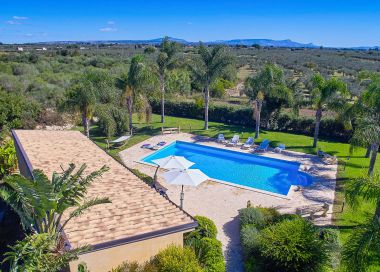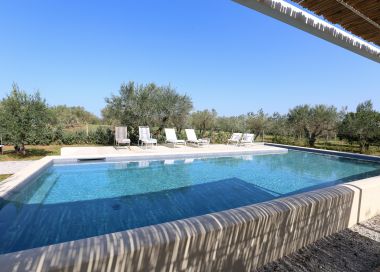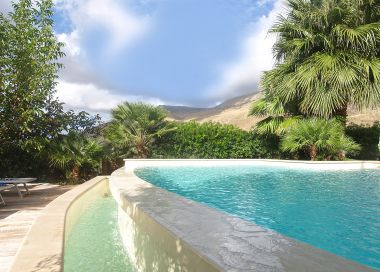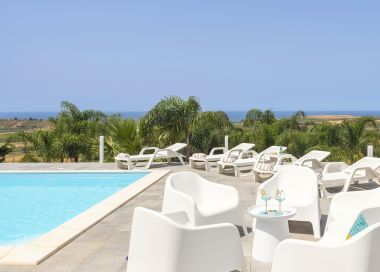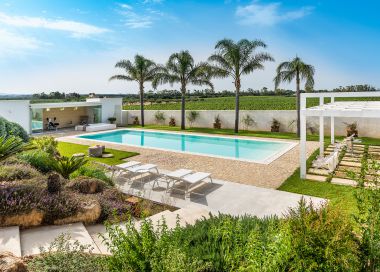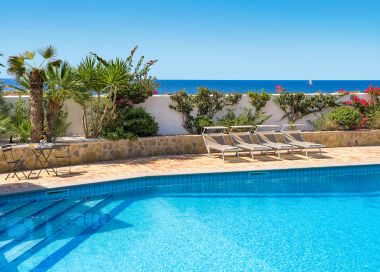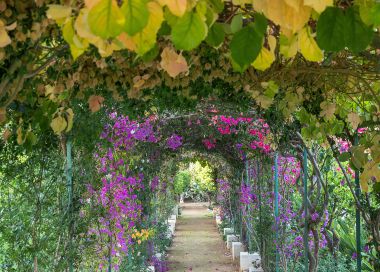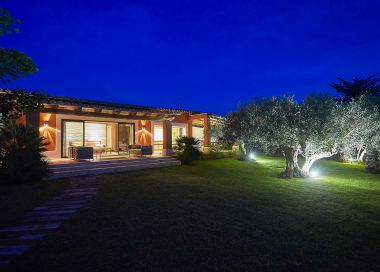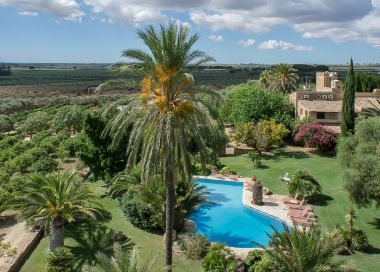Archaeological area of Segesta
Segesta, the city of the Elymians, exiles from Troy
The date of its founding is unknown, however historical documents indicate that the city was inhabited in the 4th century B.C.. The Greek historian Tucidides writes of refugees from Troy crossing the Mediterranean and arriving in Sicily to found the cities of Segesta and Erice. The refugees were called the Elymni. According to myth Segesta was founded by Acestes, the city's first king, who was the son of the noble Trojan Egesta and the river god Crimisus. From the time of their foundation, Segesta and Selinunte were at war with each other over their respective boundaries. The first conflict took place in 580 B.C. when Segesta emerged victorious. In 415 B.C. Segesta asked Athens for assistance against the initiative of Selinunte which was supported by Syracuse. The Athenians took as a pretext Segesta's request and set off for Sicily with a large expedition, besieging Syracuse but suffering disastrous defeat. The conflicts were concluded in 409 B.C. when Selinunte was besieged and defeated by the Carthaginians, once again at the request of Segesta. In 307 B.C. many inhabitants of Segesta were horrifically murdered or sold into slavery by the tyrant of Syracuse Agatocles for not having supplied the economic assistance that he demanded. After the fierce repression, Agatocles changed the name of the city to Diceopoli or "just city". In 276 B.C. the city was ceded to the armed forces controlled by Pyrrhus and returned to Punic influence after the death of the Epirote. In 260 B.C. during the first Punic War, the city joined forces with the Romans who treated it with great respect as according to tradition they had common ancestors - both peoples were descended from Trojan refugees. The Romans defended the city from an attempt by the Carthaginians to reconquer it. It was subsequently granted the status of a 'free city' with an exemption from paying taxes in contrast to other cities in Sicily (civitas libera ac immunis). It was in 104 BC. that from Segesta the slave revolts in Sicily began, the so-called servile wars led by Atenione. The revolts were extinguished in blood by the Romans in 99 B.C.. In the 5th century Segesta was destroyed by the Vandals and was never reconstructed on its previous scale.
Nevertheless, a small settlement remained and after the expulsion of the Arabs the Normans constructed a castle there. The castle was enlarged in the Swabian era becoming the centre of a mediaeval village. Its name was then almost lost until 1574, when the Dominican historian Tommaso Fazello, author of the identification of various ancient cities of Sicily, located the site. In the archaeological site there is a temple whose peculiarity is the construction of perfect Doric features in an Elymian city. The prevailing hypothesis is that it was never finished, as there are no remains of the cell or of the roof or of the grooves of the columns: its completion would have been prevented by the wars. Alternatively, it has been thought that the structure was used for indigenous rites or that the cell and the roof were built in wood. Traces of the cell have recently been found, buried inside the temple, together with traces of previous constructions (which would suggest that the temple was built on an even more ancient sacred site).The temple has 6 smooth columns on each of the two shortest sides and 14 columns on each of the two longest sides making a total of 36 columns. The temple was constructed during the last 30 years of the 5th century B.C. on the top of a hill to the west of the city outside the city walls. Its construction and its current condition make it one of the most beautiful temples of antiquity. The theatre, which likely dates from the middle of the third century B.C., is located on a hill opposite the temple at a height of approximately 440 metres. Seating for the spectators is divided into seven sections made from travertino marble. The horizontal division of the theatre made it easy for spectators to move from one section of the theatre to another. The upper section is now semi-derilict and little remains of the stage which, according to experts, would have been decorated with columns and pillars. The theatre could seat up to 3,000 spectators.
Each year in summer, the theatre is home to classical Greek performances, "Le Dionisiache" which also include modern plays, ancient dramas, dance and opera, operettas and musicals organised by the municipality of Calatafimi-Segesta.
Nevertheless, a small settlement remained and after the expulsion of the Arabs the Normans constructed a castle there. The castle was enlarged in the Swabian era becoming the centre of a mediaeval village. Its name was then almost lost until 1574, when the Dominican historian Tommaso Fazello, author of the identification of various ancient cities of Sicily, located the site. In the archaeological site there is a temple whose peculiarity is the construction of perfect Doric features in an Elymian city. The prevailing hypothesis is that it was never finished, as there are no remains of the cell or of the roof or of the grooves of the columns: its completion would have been prevented by the wars. Alternatively, it has been thought that the structure was used for indigenous rites or that the cell and the roof were built in wood. Traces of the cell have recently been found, buried inside the temple, together with traces of previous constructions (which would suggest that the temple was built on an even more ancient sacred site).The temple has 6 smooth columns on each of the two shortest sides and 14 columns on each of the two longest sides making a total of 36 columns. The temple was constructed during the last 30 years of the 5th century B.C. on the top of a hill to the west of the city outside the city walls. Its construction and its current condition make it one of the most beautiful temples of antiquity. The theatre, which likely dates from the middle of the third century B.C., is located on a hill opposite the temple at a height of approximately 440 metres. Seating for the spectators is divided into seven sections made from travertino marble. The horizontal division of the theatre made it easy for spectators to move from one section of the theatre to another. The upper section is now semi-derilict and little remains of the stage which, according to experts, would have been decorated with columns and pillars. The theatre could seat up to 3,000 spectators.
Each year in summer, the theatre is home to classical Greek performances, "Le Dionisiache" which also include modern plays, ancient dramas, dance and opera, operettas and musicals organised by the municipality of Calatafimi-Segesta.




